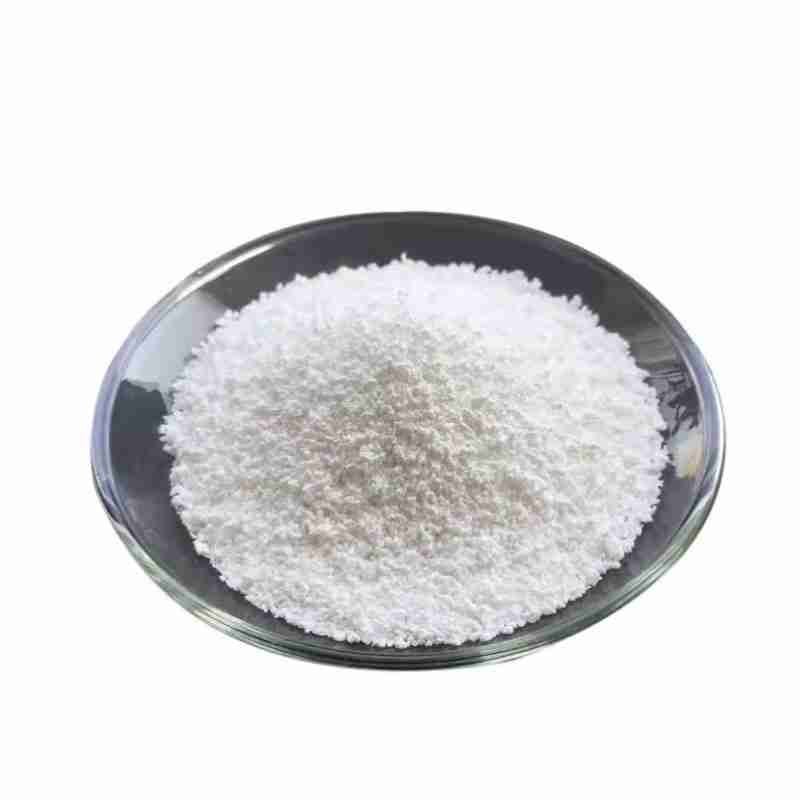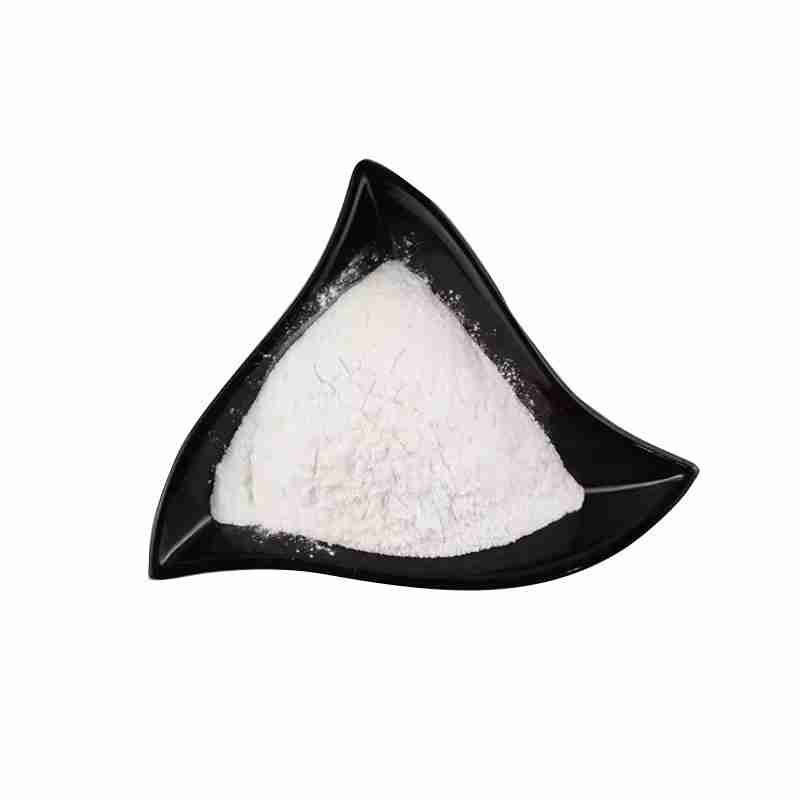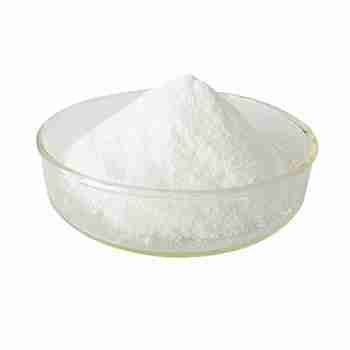Urapidil Hydrochloride CAS# 34661-75-1
Urapidil is a sympathetic antihypertensive drug. It acts as ?? 1 ?C adrenoceptor antagonists and 5-HT 1A receptor agonists act. Although the initial report showed that urapidil was also a ?? 2 ?C adrenoceptor agonist, which was not confirmed in later studies, proved that it had no agonist effect in the saphenous vein of dogs and ileum of guinea pigs. With others ?? Unlike 1-adrenoceptor villains, urapidil does not cause response tachycardia, which may be connected to its weak ?? 1-adrenoceptor antagonist activity and its impact on heart vagal drive. Urapidil has actually not been approved by the US Food and drug administration, yet it is offered in Europe.
Urapidil (URA), chemical name is 6-[[3-[4-(2-methoxyphenyl)-1-piperazinyl]propyl]amino]-1,3-dimethyl -2,4(1H,3H)-pyrimidinedione, trade name: ebrantil (ebrantil), synonym: excellent matchi, uracil substituted by phenazine.
发送询盘
Urapidil Hydrochloride CAS# 34661-75-1
| 6-[[3-[4-(2-Methoxyphenyl)-1-piperazinyl]propyl]amino]-1,3-dimethyluracil Basic information |
| Product Name: | 6-[[3-[4-(2-Methoxyphenyl)-1-piperazinyl]propyl]amino]-1,3-dimethyluracil |
| Synonyms: | 1,3-dimethyl-6-(3-(4-(o-methoxyphenyl)-1-piperazinyl)proppylamino)-uraci;6-(3-(4-(o-methoxyphenyl)-1-piperazinyl)propylamino)-1,3-dimethyluracil;b-66256;6-[[3-[4-(2-methoxyphenyl)-1-piperazinyl]propyl]amino]-1,3-dimethyluracil;UrapidilC20H29N503;URAPIDIL [6-((3-(4-(2-METHOXYPHENYL)-1-PIPERAZINYL)PROPYL)AMINO)-1,3-DIMETHYLURACIL];1,3-Dimethyl-6-[3-[4-(o-methoxyphenyl)piperazin-1-yl]propylamino]uracil;BKU |
| CAS: | 34661-75-1 |
| MF: | C20H29N5O3 |
| MW: | 387.48 |
| EINECS: | 252-130-4 |
| Product Categories: | EBRANTIL;API;API’s;34661-75-1 |
| Mol File: | 34661-75-1.mol |
![6-[[3-[4-(2-Methoxyphenyl)-1-piperazinyl]propyl]amino]-1,3-dimethyluracil Structure](https://www.chemicalbook.com/CAS/GIF/34661-75-1.gif) |
|
| 6-[[3-[4-(2-Methoxyphenyl)-1-piperazinyl]propyl]amino]-1,3-dimethyluracil Chemical Properties |
| Melting point | 156-158?? |
| Boiling point | 513.42??C (rough estimate) |
| density | 1.2058 (rough estimate) |
| refractive index | 1.7600 (estimate) |
| storage temp. | Sealed in dry,Room Temperature |
| solubility | DMSO: 25 mg/mL (64.52 mM); Water: < 0.1 mg/mL (insoluble) |
| form | powder to crystal |
| pka | 7.10(at 25??) |
| color | White to Light yellow to Light orange |
| ??max | 268nm(MeOH)(lit.) |
| Merck | 14,9865 |
| CAS DataBase Reference | 34661-75-1(CAS DataBase Reference) |
| Safety Information |
| Hazard Codes | Xn |
| Risk Statements | 22-36/37/38 |
| Safety Statements | 26 |
| RTECS | YQ9862000 |
| HS Code | 2933.59.8000 |
| Toxicity | LD50 in male mice, rats (mg/kg): 750, 550 orally; 260, 145 i.v. (Koenig) |
- 2
- 2-diallylpent-4-en-1-amine
- 4
- 95-16-9
- Ammonium sulfamate
- Benzothiazole
- cas:67889-00-3ح2
- cas:83524-75-8 | pigment black 32
- cas:928836-00-4 | 2
- cas:932745-70-5 | 4
- Chemical Minerals
- Coconut diethanolamide
- Daily Chemicals
- discount
- for sale
- General pvc resin
- hexyl D-glucoside
- in stock
- Lauramidopropyl betaine
- LAURIC ACID MONOETHANOLAMIDE
- Petroleum Additives
- Plasticiser
- Ploymers
- price
- PVC
- quotation
- Raw Materal
- Remove term: Petroleum Additives Petroleum Additive
- SODIUM ETHYL 2-SULFOLAURATE
Related Products
Chemical Name: Imazalil Sulfate
CAS No.: 58594-72-2
Molecular Formula: C14H14Cl2N2O.H2SO4
Molecular Weight: 395.26
Appearance: Solid
Chemical Name: Marbofloxacin
CAS No.: 115550-35-1
Molecular Formula: C17H19FN4O4
Molecular Weight: 362.36
Appearance: Red-Brown Crystal
Chemical Name: Semaglutide
CAS No.: 910463-68-2
Molecular Formula: C187H291N45O59
Molecular Weight: 4113.57754
Appearance: Powder
Chemical Name: Sodium D-pantothenate
CAS No.: 867-81-2
Molecular Fomula: C9H16NNaO5
Molecular weight:?241.22
Appearance:?White to off-white powder
Assay: ??99.0%
Levodopa, also known as L-DOPA or 3,4-dihydroxy-L-phenylalanine, is a naturally occurring amino acid and a critical precursor in the biosynthesis of the neurotransmitters dopamine, norepinephrine, and epinephrine. With the molecular formula C9H11NO4, levodopa is a large, neutral amino acid that plays a significant role in the treatment of Parkinson’s disease due to its ability to cross the blood-brain barrier and be converted into dopamine.
Chemically, levodopa is synthesized from the precursor amino acid tyrosine through the action of the enzyme tyrosine hydroxylase. As a medication, levodopa is often formulated with a peripheral DOPA decarboxylase inhibitor to reduce its conversion to dopamine outside the brain, thereby increasing its effectiveness and reducing side effects.
Levodopa is characterized by its effectiveness in alleviating the motor symptoms of Parkinson’s disease, such as tremors, rigidity, and bradykinesia. It is typically administered orally and absorbed from the gastrointestinal tract, where it is then transported to the brain.
In summary, levodopa is a vital pharmaceutical compound used in neurology for its role in treating Parkinson’s disease by replenishing the brain’s dopamine levels. Its targeted delivery and conversion to dopamine make it an essential treatment option for managing the motor symptoms associated with this condition.
Chemical Name: Tylosin tartrate
CAS No.:?74610-55-2
Appearance:?white powder
Assay????98.0%
Levodopa, also known as L-DOPA or 3,4-dihydroxy-L-phenylalanine, is a naturally occurring amino acid and a critical precursor in the biosynthesis of the neurotransmitters dopamine, norepinephrine, and epinephrine. With the molecular formula C9H11NO4, levodopa is a large, neutral amino acid that plays a significant role in the treatment of Parkinson’s disease due to its ability to cross the blood-brain barrier and be converted into dopamine.
Chemically, levodopa is synthesized from the precursor amino acid tyrosine through the action of the enzyme tyrosine hydroxylase. As a medication, levodopa is often formulated with a peripheral DOPA decarboxylase inhibitor to reduce its conversion to dopamine outside the brain, thereby increasing its effectiveness and reducing side effects.
Levodopa is characterized by its effectiveness in alleviating the motor symptoms of Parkinson’s disease, such as tremors, rigidity, and bradykinesia. It is typically administered orally and absorbed from the gastrointestinal tract, where it is then transported to the brain.
In summary, levodopa is a vital pharmaceutical compound used in neurology for its role in treating Parkinson’s disease by replenishing the brain’s dopamine levels. Its targeted delivery and conversion to dopamine make it an essential treatment option for managing the motor symptoms associated with this condition.
Chemical Name: Dehydrocholic acid
Synonyms: Acide dehydrocholique; Triketocholanic acid
CAS No.: 81-23-2
Molecular Formula: C24H34O5
Molecular Weight: 402.53
Appearance: Powder
Chemical Name:Sodium Stibogluconate
CAS No.:16037-91-5
Appearance:?White liquid
Assay??99.0%
Chemical Name: Ashwagandha Extract
Synonyms: Withania somnifera, ext.; Withania Somnefera Extract
CAS: 90147-43-6
Appearance: Brown
Chemical Name: LAPPACONITINE HYDROBROMIDE
Synonyms: Lappaconite HBR; ALLAPININE HYDROBROMIDE
CAS No.: 97792-45-5
Molecular Fomula: C32H45BrN2O8
Molecular weight:?665.61
Appearance: Powder crystal
Assay: ??99.0%
Chemical Name: 1,1,2,2-Tetrachloroethane
Other Name: Tetrachlorethane
CAS No.: 79-34-5
Molecular Formula: C2H2Cl4
Molecular Weight: 167.85
Appearance: Liquid

















